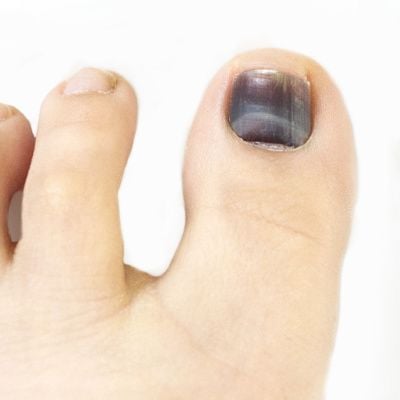 Black toenails, while often considered a minor concern, can be a source of discomfort and concern. This discoloration can result from various factors, ranging from trauma to underlying medical conditions. In this detailed exploration, we unravel the mysteries behind black toenails, offering insights into the causes, effective treatments, and practical strategies for prevention.
Black toenails, while often considered a minor concern, can be a source of discomfort and concern. This discoloration can result from various factors, ranging from trauma to underlying medical conditions. In this detailed exploration, we unravel the mysteries behind black toenails, offering insights into the causes, effective treatments, and practical strategies for prevention.
Understanding Black Toenails: The Basics
Anatomy of a Toenail:
To comprehend black toenails, we must first understand the anatomy of a toenail. This section breaks down the intricate structure of toenails, highlighting their susceptibility to discoloration and the significance of maintaining their health.
What Causes Black Toenails?:
The causes of black toenails are diverse. Trauma, fungal infections, and certain medical conditions can all contribute to the discoloration. This section overviews these factors, setting the stage for a deeper dive into each cause.
Trauma: The Common Culprit
Stubbed Toes and Repetitive Stress:
One of the primary causes of black toenails is trauma. Stubbing toes, dropping heavy objects on the feet, or engaging in activities that put repetitive stress on the toes can lead to blood pooling under the nail, resulting in discoloration.
Running and Ill-Fitting Shoes:
Runners often experience black toenails due to the constant impact on the feet. Additionally, ill-fitting shoes can contribute to this issue. This section provides insights into how these factors can cause trauma and discoloration.
Fungal Infections: A Hidden Culprit
Onychomycosis and Black Toenails:
Fungal infections, particularly onychomycosis, can change the color and texture of toenails, including black discoloration. We delve into how fungal infections develop, their symptoms, and their impact on toenail health.
Prevention and Treatment of Fungal-Related Black Toenails:
Prevention is vital when it comes to fungal infections. This section offers practical tips on keeping toenails fungus-free and explores effective treatment options if a fungal infection is present.
Subungual Hematoma: Blood Beneath the Nail
Understanding Subungual Hematoma:
Subungual hematoma occurs when blood accumulates beneath the toenail, causing it to turn black. This section provides an in-depth look at the causes and symptoms of subungual hematoma and the potential complications associated with this condition.
Treatment Options for Subungual Hematoma:
Addressing subungual hematoma promptly is crucial for both pain relief and preventing further complications. We discuss various treatment options, from at-home care to professional interventions.
Medical Conditions and Black Toenails
Melanoma and Other Serious Conditions:
While less common, black toenails can be a symptom of more serious conditions, including melanoma. This section explores the association between black toenails and potential underlying medical issues.
Seeking Professional Evaluation:
Recognizing when to seek professional evaluation is vital. We guide the signs that indicate a visit to a healthcare professional is necessary, ensuring timely diagnosis and appropriate care.
Prevention Strategies for Black Toenails
Proper Footwear and Foot Care:
Prevention is often the best medicine. This section outlines the importance of wearing well-fitted shoes, maintaining good foot hygiene, and adopting habits that minimize the risk of trauma and infections.
Regular Check-ups and Early Intervention:
Regular check-ups with a healthcare professional can catch potential issues before they escalate. We emphasize the significance of early intervention in maintaining overall toenail health.
Conclusion
Black toenails, though common, should not be dismissed as a mere cosmetic concern. Whether resulting from trauma, fungal infections, or underlying medical conditions, understanding the causes and adopting preventive measures is essential. By unraveling the mysteries behind black toenails and embracing a proactive approach to foot health, individuals can ensure their toenails remain a testament to their well-being rather than a source of discomfort and uncertainty.
Disclaimer:
The information on this website is provided for educational and information purposes only and is not medical advice. Always consult with a licensed medical provider and follow their recommendations regardless of what you read on this website. If you think you are having a medical emergency, dial 911 or go to the nearest emergency room. Links to other third-party websites are provided for your convenience only. If you decide to access any of the third-party websites, you do so entirely at your own risk and subject to the terms of use for those websites. Neither Northwest Podiatrists, nor any contributor to this website, makes any representation, express or implied, regarding the information provided on this website or any information you may access on a third-party website using a link. Use of this website does not establish a doctor-patient relationship. If you would like to request an appointment with a health care provider, please call our office at (360) 597-4223.


